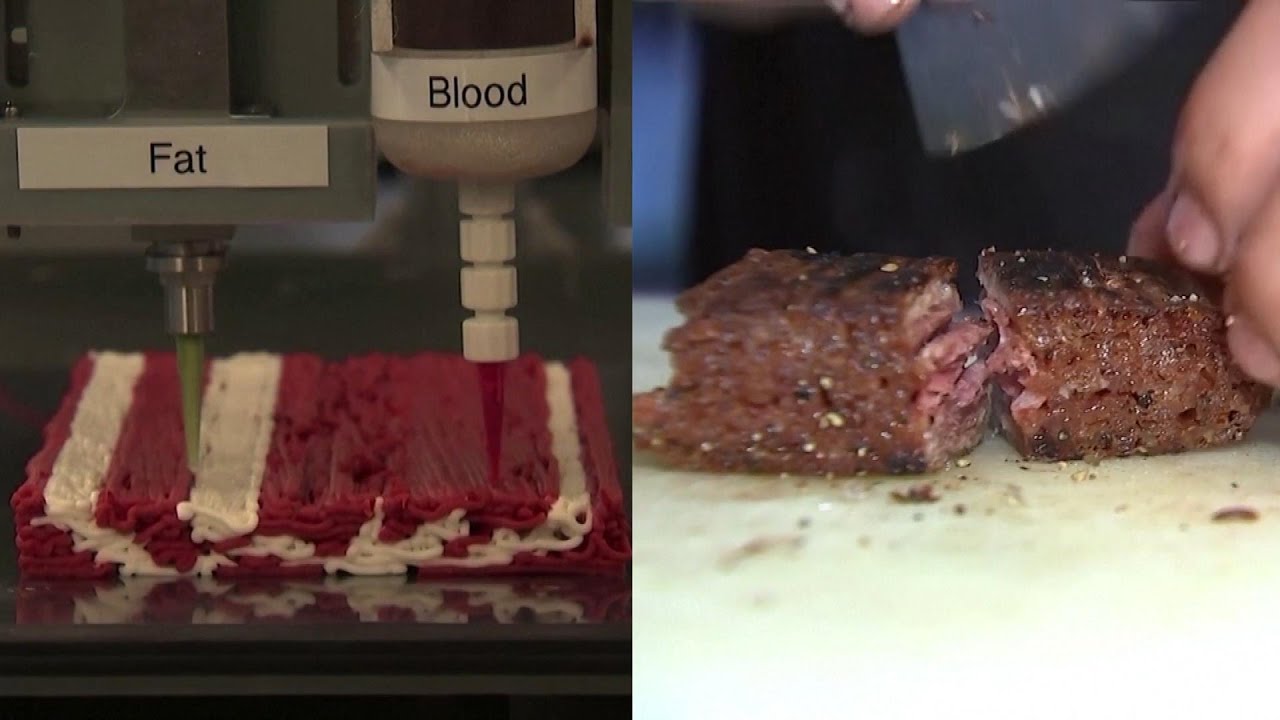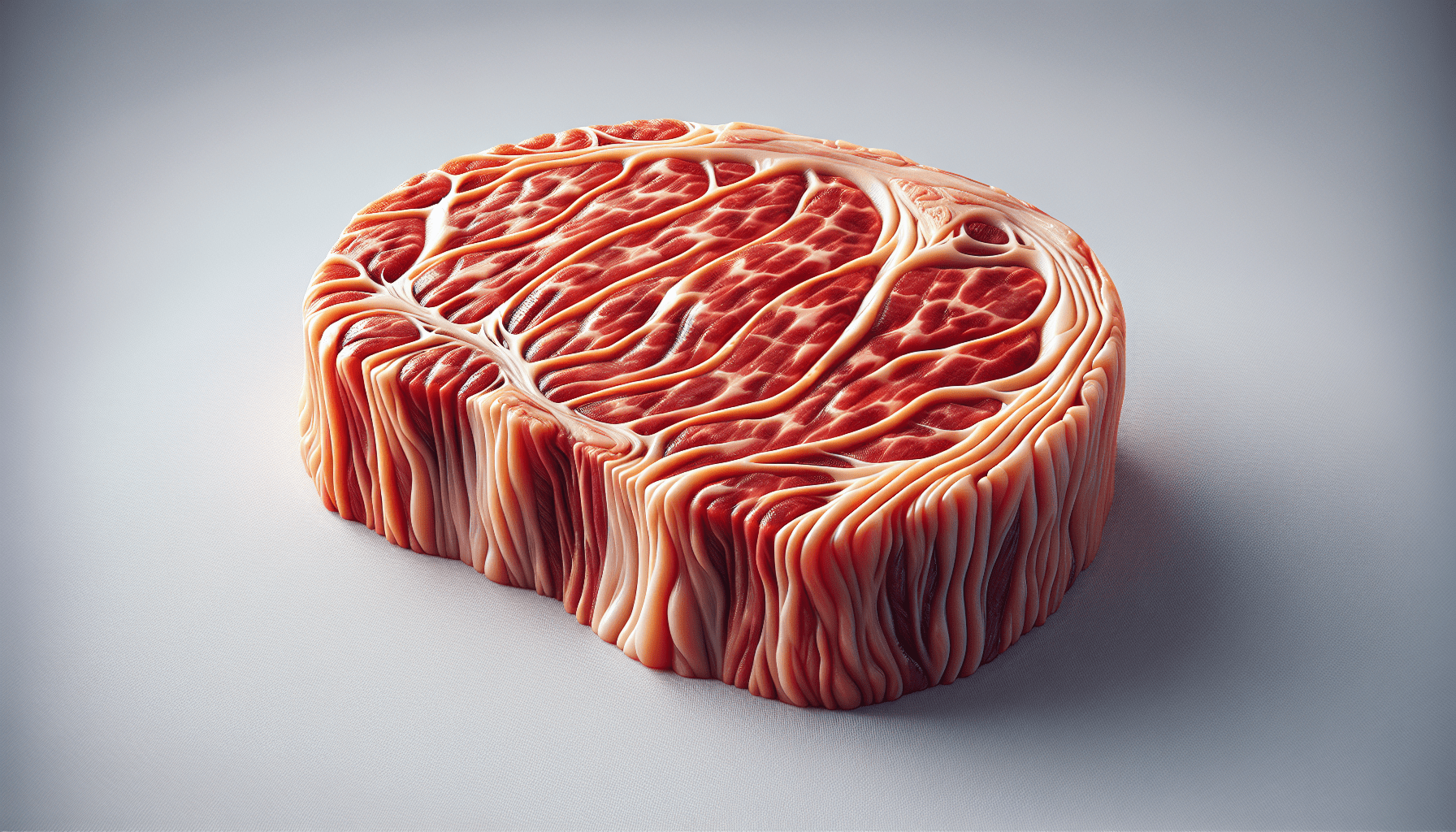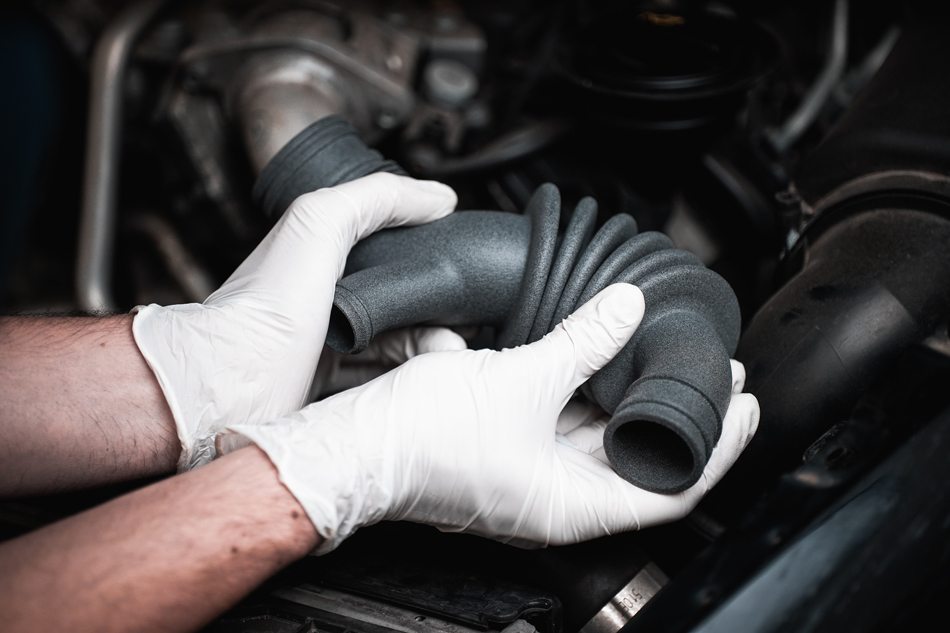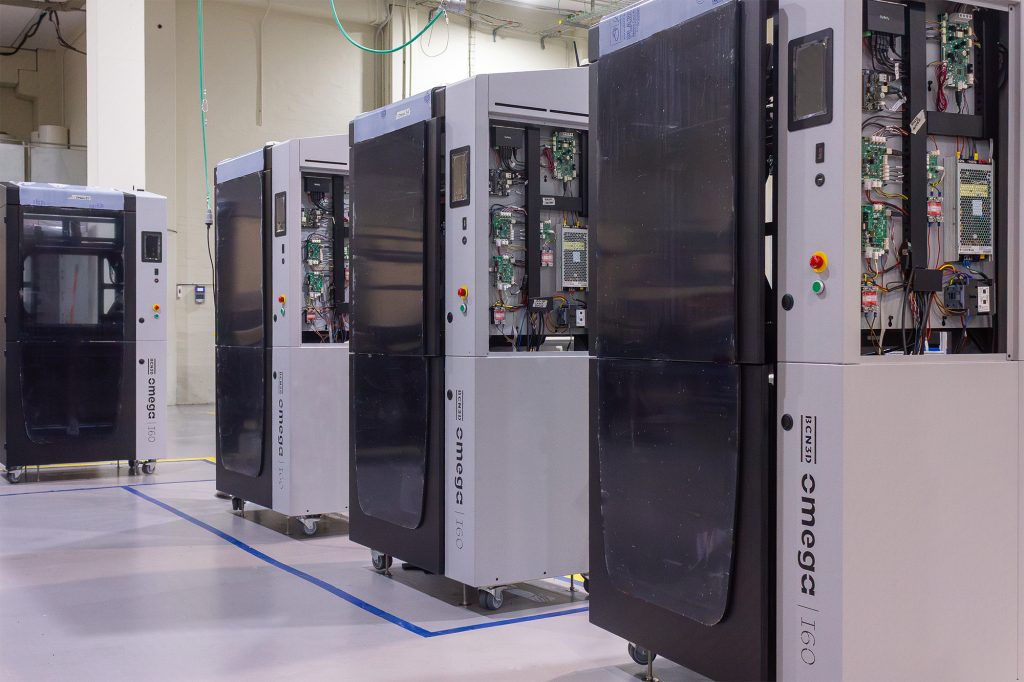Creality Official K2 Plus Combo 3D Printer, Multi Color Printing with CFS 600mm/s High-Speed Full Auto-Leveling Dual Al Camera Next-Gen Direct Drive Extruder Build Volume 13.78x13.78x13.78 inch
$1,349.00 (as of June 19, 2025 23:45 GMT +00:00 - More infoProduct prices and availability are accurate as of the date/time indicated and are subject to change. Any price and availability information displayed on [relevant Amazon Site(s), as applicable] at the time of purchase will apply to the purchase of this product.)Imagine biting into a steak that looks, feels, and even cuts like the real deal, but was actually created using a 3D printer. This innovative technology is being used by a meat alternative startup in Israel to produce meat substitutes made from a mix of soy, pea protein, chickpeas, beetroot, nutritional yeast, and coconut fat. The goal is to become the largest meats company in the world by leveraging technology instead of relying on animal products.
This revolutionary approach to creating meat substitutes aims to mimic the taste and texture of flank steak, providing a truly authentic dining experience. With the texture feeling right and even the smell being on point, this 3D-printed meat has the potential to redefine the way we think about meat products. Inside Edition’s video showcases the process behind this cutting-edge technology and the positive reception it has received from diners.
$30 off $400+ Anycubic Products with code AC30OFF
Overview of 3D-Printed Meat
Introduction to 3D-printed meat
3D-printed meat is a cutting-edge innovation in the culinary world that offers a sustainable and cruelty-free alternative to traditional meat products. Unlike conventional meat products obtained through the slaughter of animals, 3D-printed meat is produced using a combination of plant-based ingredients and advanced technology.
Ingredients used in 3D-printed meat
The key ingredients used in the production of 3D-printed meat include soy and pea protein, chickpeas, beetroot, nutritional yeast, and coconut fat. These plant-based components are carefully selected to mimic the taste, texture, and nutritional profile of traditional animal-based meats.
Process of creating 3D-printed meat
The process of creating 3D-printed meat involves mixing the plant-based ingredients in precise proportions to achieve the desired taste and texture. This mixture is then formed into steak-like shapes using a 3D printer, resulting in a product that closely resembles traditional meat cuts in appearance and mouthfeel.
Redefine Meat Startup
Information about Redefine Meat startup
Redefine Meat is a pioneering meat alternative startup based in Israel that specializes in the production of 3D-printed meat products. The company is at the forefront of innovation in the plant-based meat industry, offering consumers a cruelty-free and sustainable alternative to conventional meat.
Goal of Redefine Meat company
The primary goal of Redefine Meat is to become the largest meat company in the world by harnessing advanced technology to create high-quality 3D-printed meat products. The company aims to revolutionize the way meat is produced and consumed globally by offering a sustainable and environmentally friendly alternative to traditional meat products.

Buy Photon Mono M5 Get Free 1KG Resin
Technology behind 3D Printing Meat
Detailed explanation of the 3D printing process
The technology behind 3D printing meat involves using a specialized 3D printer to create intricate meat-like structures from plant-based ingredients. The printer carefully layers the ingredients to replicate the texture and appearance of traditional meat cuts, resulting in a product that is almost indistinguishable from conventional meat.
Use of soy and pea protein in 3D-printed meat
Soy and pea protein are essential components in the production of 3D-printed meat, as they provide the necessary protein content and texture to mimic traditional meat products. These plant-based proteins are rich in nutrients and are crucial in creating a meat alternative that is both tasty and nutritious.
Incorporation of chickpeas, beetroot, and nutritional yeast in the meat
Chickpeas, beetroot, and nutritional yeast are used in 3D-printed meat to enhance the flavor, color, and nutritional value of the product. These ingredients are carefully selected to create a well-rounded meat alternative that not only tastes delicious but also provides essential nutrients for a balanced diet.
Comparison with Traditional Meat
Advantages of 3D-printed meat over traditional meat
3D-printed meat offers several advantages over traditional meat products, including sustainability, cruelty-free production, and reduced environmental impact. By using plant-based ingredients and advanced technology, 3D-printed meat provides a more ethical and environmentally friendly option for consumers.
Sustainability aspect of 3D-printed meat
One of the key benefits of 3D-printed meat is its sustainability, as it eliminates the need for livestock farming and reduces greenhouse gas emissions associated with traditional meat production. By using plant-based ingredients and innovative technology, 3D-printed meat offers a more sustainable and eco-friendly alternative to conventional meat products.
Health benefits of consuming 3D-printed meat
In addition to its environmental benefits, 3D-printed meat also offers several health advantages over traditional meat products. By using plant-based ingredients and eliminating harmful additives, 3D-printed meat provides a nutritious and wholesome alternative that is lower in saturated fats and cholesterol.

Taste and Texture of 3D-Printed Meat
Perception of taste and texture by consumers
Consumers who have tried 3D-printed meat often report positive experiences with the taste and texture of the product. Many diners find that 3D-printed meat closely resembles traditional meat cuts in both flavor and mouthfeel, making it a satisfying and delicious alternative for those looking to reduce their meat consumption.
Comparison of smell of 3D-printed meat with traditional meat
The smell of 3D-printed meat is often compared to that of traditional meat products, with many consumers noting the authentic aroma of the plant-based alternative. By using natural ingredients and advanced technology, 3D-printed meat is able to replicate the savory scent of traditional meats, further enhancing its appeal to consumers.
Consumer Feedback
Opinions of diners who have tried 3D-printed meat
Feedback from consumers who have tried 3D-printed meat has been overwhelmingly positive, with many diners expressing satisfaction with the taste, texture, and overall quality of the product. The innovative nature of 3D-printed meat has garnered praise from vegans, vegetarians, and meat-eaters alike, highlighting its broad appeal and potential for widespread adoption.
Satisfaction levels of consumers with 3D-printed meat
Consumer satisfaction levels with 3D-printed meat are high, as many diners find the product to be a flavorful and satisfying alternative to traditional meat cuts. The positive feedback from consumers reflects the growing demand for meat alternatives that are ethical, sustainable, and delicious, pointing towards a promising future for 3D-printed meat in the culinary industry.

Potential Impact on Culinary Industry
Evolution of culinary practices with the introduction of 3D-printed meat
The introduction of 3D-printed meat is revolutionizing culinary practices by offering chefs and food establishments a versatile and sustainable alternative to traditional meat products. By incorporating 3D-printed meat into their menus, restaurants and chefs can offer innovative and delicious plant-based dishes that cater to a wide range of dietary preferences and restrictions.
Integration of 3D-printed meat in restaurants and food establishments
As consumer demand for sustainable and ethical food options continues to rise, many restaurants and food establishments are integrating 3D-printed meat into their menus. By offering plant-based alternatives that are flavorful, nutritious, and environmentally friendly, these establishments are able to attract a diverse clientele and stay ahead of culinary trends in the evolving food industry.
Challenges and Limitations
Potential challenges faced by 3D-printed meat industry
The 3D-printed meat industry faces several challenges, including regulatory hurdles, consumer perception, and scalability of production. Overcoming these obstacles requires innovative solutions and strategic partnerships to ensure the continued growth and success of 3D-printed meat products in the global market.
Regulatory hurdles for widespread adoption of 3D-printed meat
Regulatory hurdles present a significant obstacle to the widespread adoption of 3D-printed meat products, as governing bodies and food safety authorities may have stringent requirements for new food technologies. Addressing these regulatory concerns and ensuring compliance with industry standards is essential for the successful integration of 3D-printed meat into the mainstream food market.
Future Prospects of 3D-Printed Meat
Predictions for the future of 3D-printed meat industry
The future of the 3D-printed meat industry looks promising, with continued growth, innovation, and expansion expected in the coming years. As consumer awareness of ethical and sustainable food options increases, the demand for 3D-printed meat products is likely to rise, driving further advancements and investments in plant-based food technologies.
Innovations and advancements expected in 3D-printed meat technology
Innovations and advancements in 3D-printed meat technology are anticipated to enhance the quality, taste, and sustainability of plant-based meat alternatives. By leveraging cutting-edge research and development, companies like Redefine Meat are poised to lead the industry in creating innovative products that appeal to a broad audience and contribute to a more sustainable food future.
Conclusion
Summary of key points discussed in the article
In summary, 3D-printed meat offers a groundbreaking alternative to traditional meat products by using plant-based ingredients and advanced technology to create delicious, sustainable, and ethical meat alternatives. Companies like Redefine Meat are leading the way in revolutionizing the culinary industry and shaping the future of food with innovative 3D-printed meat products.
Final thoughts on the future of 3D-printed meat industry
The future of the 3D-printed meat industry is brimming with potential for growth, innovation, and positive impact on the global food market. With increasing consumer demand for sustainable and ethical food options, the adoption of 3D-printed meat products is expected to rise, offering a delicious and environmentally friendly alternative to traditional meat cuts. As technology continues to evolve and consumer preferences shift towards plant-based alternatives, the future of 3D-printed meat industry looks bright and promising.
$30 off $400+ Anycubic Products with code AC30OFF








